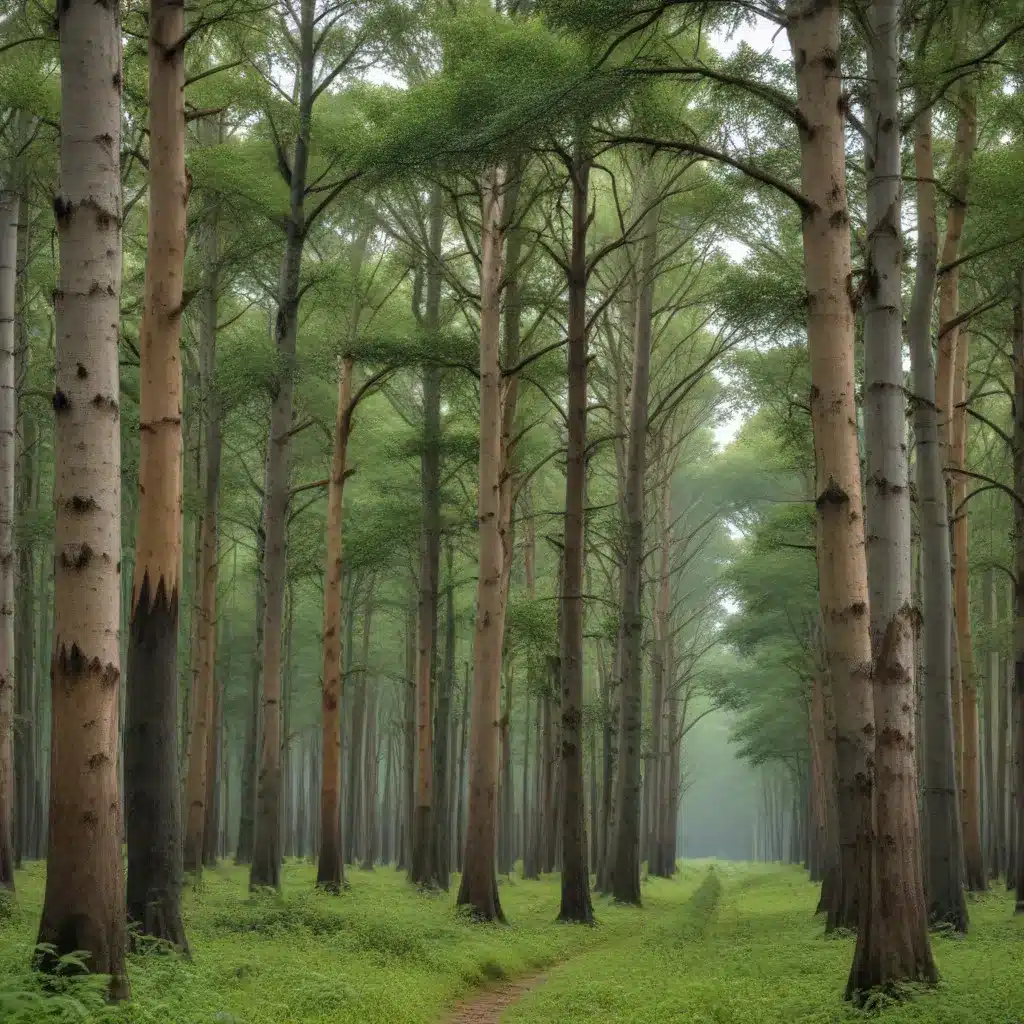
Forest Ecosystems
Forests are a vital part of our planet’s natural infrastructure, providing critical habitats, resources, and services that sustain life. From the towering conifers of the Pacific Northwest to the lush deciduous woodlands of the Eastern Seaboard, these complex, interconnected ecosystems play a crucial role in maintaining global biodiversity, regulating climate, and supporting human well-being.
As an experienced avian caretaker, I have a deep appreciation for the intricate relationship between forests and the diverse array of bird species that call them home. Birds are often considered “indicator species” – their presence, abundance, and behaviors can reveal important insights about the overall health and resilience of forest habitats. By understanding the threats, vulnerabilities, and opportunities facing these ecosystems, we can work to protect and restore the delicate balance that sustains our feathered friends and the broader web of life.
Threats to Forest Ecosystems
Forests around the world face a multitude of threats, many of which are exacerbated by human activities and the changing climate. Some of the most pressing issues include:
Deforestation and Habitat Loss
The conversion of forested lands to agriculture, urban development, and other land uses is a major driver of habitat loss and fragmentation. Deforestation not only destroys critical wildlife habitat, but also disrupts ecosystem functions, reduces biodiversity, and contributes to global greenhouse gas emissions.
Climate Change Impacts
As the climate continues to warm, forests are increasingly vulnerable to a range of threats, including drought, wildfire, insect infestations, and shifting precipitation patterns. These changes can lead to widespread tree mortality, changes in species composition, and the disruption of vital ecological processes.
Invasive Species
The introduction of non-native plants, insects, and pathogens can have devastating effects on forest ecosystems. Invasive species often outcompete native flora and fauna, altering habitat structure and reducing biodiversity. One prominent example is the emerald ash borer, which has decimated ash tree populations across North America.
Avian Biodiversity in Forests
Forests are home to an incredible diversity of bird species, each with unique adaptations and ecological roles. These avian communities are essential components of forest ecosystems, contributing to nutrient cycling, seed dispersal, pest control, and overall ecosystem health.
Forest-Dependent Birds
Many bird species are closely tied to specific forest types and structures, relying on the availability of suitable nesting sites, foraging opportunities, and cover from predators. Some examples include the pileated woodpecker, scarlet tanager, and Acadian flycatcher, which thrive in mature, diverse forest habitats.
Endangered and Threatened Bird Species
Sadly, some forest-dwelling bird species have experienced significant population declines and are now considered endangered or threatened. The red-cockaded woodpecker, for instance, is dependent on old-growth pine forests, which have been severely fragmented and reduced in extent. Conservation efforts are crucial for protecting these vulnerable species.
Avian Habitat Requirements
Birds have diverse habitat needs, ranging from the specific structural features (e.g., tree cavity size, understory density) to the broader landscape context (e.g., connectivity, patch size). Understanding these requirements is essential for managing forests to support thriving avian communities.
Vulnerabilities in Forest Ecosystems
Forest ecosystems are complex, dynamic systems that face a variety of vulnerabilities, many of which are amplified by human activities and climate change.
Fragmentation and Connectivity
The division of forests into smaller, isolated patches can have severe consequences for wildlife, including reduced gene flow, increased predation, and the disruption of essential ecological processes. Maintaining landscape connectivity is crucial for the long-term viability of forest-dependent species.
Wildfire and Forest Disturbances
Increased frequency and severity of wildfires, as well as other natural disturbances like insect outbreaks and disease, can significantly alter forest composition and structure. These changes can have cascading effects on the entire ecosystem, including the bird communities that rely on it.
Pollution and Resource Extraction
Air and water pollution, as well as unsustainable logging and mining practices, can degrade forest habitats and compromise the health and resilience of these ecosystems. Addressing these issues is essential for preserving the integrity of forest systems.
Opportunities for Forest Conservation
Despite the many threats facing forests, there are also numerous opportunities for conservation, restoration, and sustainable management. By harnessing the collective efforts of scientists, land managers, and engaged citizens, we can work to protect and enhance these vital ecosystems.
Sustainable Forest Management
Practices such as selective logging, prescribed burning, and the promotion of structural diversity can help maintain the health and resilience of managed forests. By prioritizing the needs of wildlife and ecosystem services, we can ensure that these landscapes continue to thrive.
Ecological Restoration Approaches
Reforestation efforts, the removal of invasive species, and the reintroduction of native flora and fauna can help to rehabilitate degraded forest ecosystems. These approaches can also improve habitat quality and connectivity for birds and other wildlife.
Citizen Science and Community Engagement
Engaging the public in forest monitoring, habitat restoration, and conservation advocacy can foster a deeper appreciation for these ecosystems and empower communities to take an active role in their stewardship. Citizen science projects, educational outreach, and collaborative partnerships can all contribute to the long-term sustainability of our forests.
At Mika Birds Farm, we recognize the vital importance of healthy, thriving forest ecosystems for the well-being of birds and all life. By understanding the threats, vulnerabilities, and opportunities facing these landscapes, we can work together to protect and restore the forests that sustain us. Whether you’re a land manager, a birdwatcher, or simply someone who appreciates the beauty and wonder of the natural world, there are countless ways to get involved and make a difference.
I encourage you to explore the resources and information available through organizations like the USDA Forest Service, the National Audubon Society, and the International Union for Conservation of Nature to learn more about the current state of forest ecosystems and how you can contribute to their conservation. Together, we can ensure that our forests continue to provide the essential services and habitats that support the rich tapestry of life on our planet.


